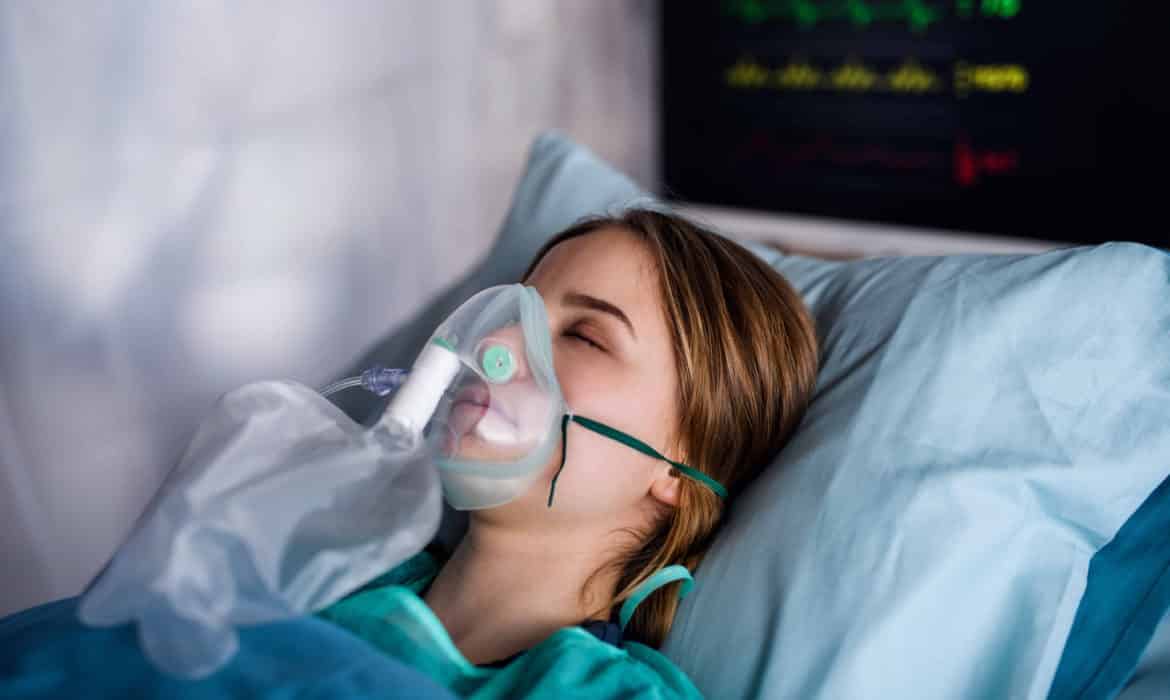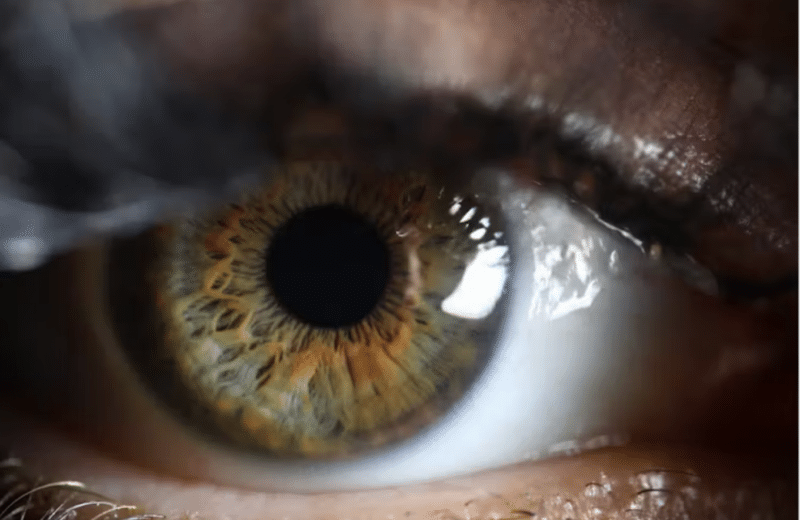Of all his years, 2020 was exceptionally challenging for Vietnam veteran Matthew Thomas. After the 75-year-old Aurora resident tested positive for Covid-19 in mid-May, doctors had to intubate him for 33 days so he didn’t go into respiratory failure. While Thomas survived, his 33-year-old son, diagnosed with Covid-19 shortly before his father was hospitalized, passed away.
Thomas also faced widespread effects from Covid-19, stemming from the time spent intubated and in intensive care. “The byproduct of the disease is that my muscles went to sleep,” says Thomas, who says his muscles became so weak that he could not use his arms and legs.
“I couldn’t do anything. I couldn’t even stand up,” he says.
ICU delirium
Experiences like Thomas’ often happen while people are on ventilators, under heavy sedation, or immobile in the intensive care unit (ICU) or after a hospitalization. Known as post-intensive care syndrome or PICS, the condition can involve physical symptoms, emotional effects, and mental difficulties. It existed long before Covid-19, but the pandemic has undeniably increased the number of people who require various degrees of rehabilitation to recover from it.
Recovery from Covid-19 post-intensive care syndrome can last months, leaving people in limbo. In addition to lingering physical symptoms, some Covid-19 patients have persistent cognitive symptoms, such as decreased memory, concentration issues, lack of problem-solving skills, and emotional issues. In some, after-effects include ICU delirium, which can include frightening hallucinations.
“Some patients become agitated and aggressive because they feel that they are being held against their will and imprisoned or tortured,” says clinical neuropsychologist Eric Larson, PhD, director of psychology and brain injury at Marianjoy Rehabilitation Hospital in Wheaton, a part of Northwestern Medicine.
“They develop confabulations, horrific stories in their minds about what is happening to them,” he says. “They may require some kind of restraint or medication, and some develop post-traumatic stress disorder, but we haven’t seen that here.”
By the time patients arrive at Marianjoy for rehab, they’re no longer experiencing delusions, Larson says, “although some of them exhibit [and] develop symptoms of post-traumatic stress disorder related to their perceptions of events during the worst phase of their illness.”
Patients also may suffer from emotional distress and feel depressed and anxious. Thomas vividly remembers his low point after he was transferred from the hospital to a pulmonary care facility. “I suffered when doctors were trying to get the trachea tube right to help me breathe. I was thinking I wished I had died,” he says. “I was also anxious because I hadn’t seen my wife since May.”
Such feelings are not unusual, Larson says. As a neuropsychologist, “I think one of the most important things I can do is to normalize a patient’s distress,” he says. “The fact that they are very sad and very discouraged doesn’t mean they have a severe psychiatric condition. They feel anxious because they don’t know if their symptoms will ever go away, and they’re anxious because they haven’t had any visitors and they’ve been away from home for so long.”
“Their response is understandable,” he says. “We give them hope that they will get past this situation and they will get better.”
Lasting symptoms
Prolonged time spent immobile in the intensive care unit can lead to other problems too, such as neuropathy — or nerve damage in the extremities — says physical medicine and rehabilitation specialist Mahesh Ramachandran, MD, chief medical officer at Marianjoy.
“There is nerve and muscle damage to the hands and feet that causes balance issues and sometimes difficulty walking,” Ramachandran says. “Physical therapy exercises will strengthen the muscles and help them neurologically, although sometimes patients have long-lasting effects of pain in the feet and hands that does not go away.”
People with weakened heart and lungs from Covid-19 need to start slowly with rehabilitation to build their endurance, Ramachandran says. Many begin by simply standing up next to their bed before walking around their room.
“Depending on the severity of symptoms, a typical post-Covid patient stays on the rehab unit for two to three weeks before they are able to go home with an outpatient therapy program,” Ramachandran says.
When Chicagoan Cynthia Fostle was diagnosed with Covid-19 in April, she had both cognitive and physical symptoms, feeling weak and confused. When friends called to check on Fostle, an independent publishing consultant who lives alone, she either didn’t answer the phone or couldn’t carry on a conversation. Worried, her friends called the police to go to her apartment for a well-being check.
“[The police] talked me into going to the emergency room,” Fostle says. “The doctors determined I had acute respiratory failure and had developed hypoxia because my body was not getting enough oxygen, which was the cause of my confusion. They diagnosed me with Covid-19 and put me in isolation.” She ended up staying in the hospital for four and a half weeks.
Because Fostle, 74, did not want to be intubated, her care team administered oxygen via a high-flow nasal cannula — a tube with small prongs that delivers oxygen through the nostrils. Doctors tried all of the standard treatments, but her progress was slow. They then used a transfusion of convalescent blood plasma from people who had recovered from Covid-19. “It’s an experimental treatment that doesn’t work for everyone, but that was the turning point in my recovery,” Fostle says.
Treatment using Covid-19 convalescent plasma is now under an emergency use authorization from the Food and Drug Administration, though studies to date are limited and incomplete, without a randomized controlled trial.
Road to recovery
After four and a half weeks in the hospital, Fostle’s symptoms resolved and she was able to breathe on her own. She then spent time at a rehabilitation facility where she gained enough strength to be able to live at home and drive her car. She recently completed 10 weeks of twice-a-week sessions at FYZICAL Therapy and Balance Centers in Lincoln Park to improve her balance and stamina.
Because many people recovering from Covid-19 have been immobile or sedentary and have decreased lung capacity, it can lead to weakness in the larger muscles of their body, especially the legs, which contributes to mobility problems and loss of balance, says David Dowdy, DPT, vice president of operations for FYZICAL Therapy and Balance Centers.
The specialized physical therapy has made a difference in Fostle’s long road to recovery. “The therapist, Kathleen, was very sensitive about isolating which of my muscles were weak and having me do exercises to strengthen them,” Fostle says.
And her therapist helps with more than physical recovery. “I didn’t realize I needed help with my confidence, but I did,” she says. “My physical therapist was so positive, reinforcing, and challenging that every time I walk out of physical therapy, I felt I’d accomplished a lot.”
From the ICU to physical therapy, most patients show steady improvement over time, Larson says. “A lot of the depression and anxiety has resolved by the time they go home. I always say that going home is the best medication of all.”
Thomas would agree. “My goal was to go home walking under my own power and with no need for oxygen,” he says.
He almost met that goal. When he left Marianjoy, he was able to walk, although he did need to use a walker and required a small amount of supplemental oxygen.
Nevertheless, Thomas still suffers from Covid toe — a skin lesion that may be linked to a Covid-related inflammatory condition, although researchers have not pinpointed the exact cause. The condition may require amputation. He also has to take medication for blood clots in his right leg.
“It’s not 14 days and you go home, back to work, and everything is hunky-dory,” Thomas says. “When Covid goes away, it doesn’t really go away. It leaves you with side effects that could last the rest of your life.”













